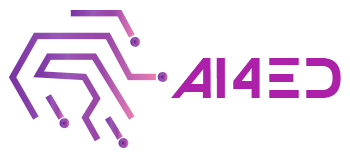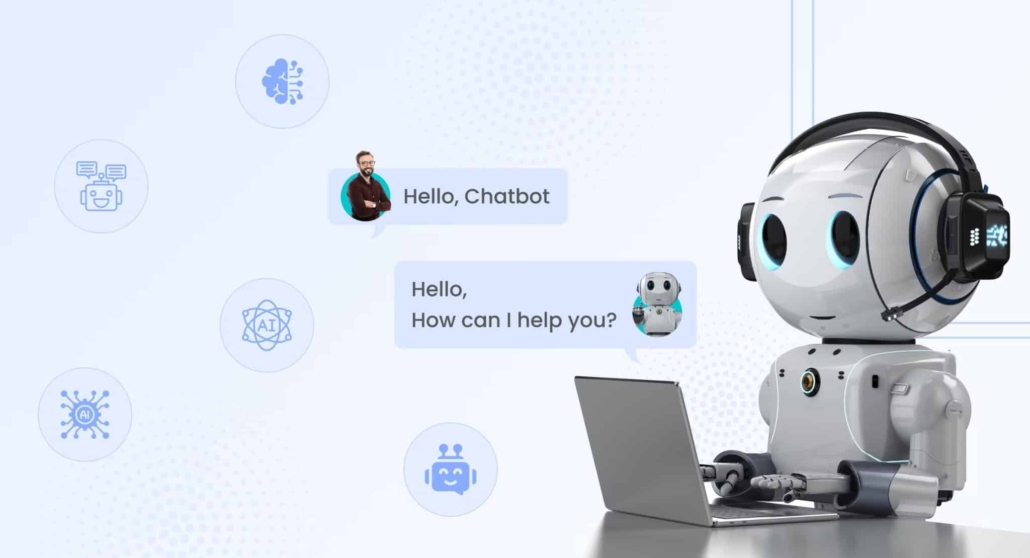AI in education
AI in Education
-
Academic research into the application of AI in education has been ongoing for more than 30 years.
-
It combines linguistics, psychology, sociology, and anthropology to support the development of educational applications of AI and other AI tools that are flexible, inclusive, personalized, engaging and effective to support formal education and lifelong learning.
-
Current concerns regarding the usefulness and uses of AI in education relate to:
-
its cultural transfer
-
adaptation to different linguistic and social contexts
-
the needs of educational inclusiveness.
-
-
Educational research in this field seeks:
-
to promote the development of key, transversal and future-oriented competences
-
to develop a learning culture and dynamics, learning to learn skills and a sense of initiative
-
to promote learning possibilities and scientific, technical and social competences that respond to the new challenges of society in the short, medium and long term.
-
Possibilities of use (good practices)
-
Active Learning:
-
Problem-based and project-based learning at its core.
-
Focused on collaborative learning.
-
-
Personalised Tutoring:
-
Personalised academic tutoring and teaching follow-up for each and every student
-
adapted to individual learning needs, different rates of learning and particular characteristics.
-
-
Dropout Prevention:
-
Early detection of indicators leading to dropout in order to be able to preventively target them.
-
Adaptation of tutoring to these more sensitive cases that require more specialised or intensive intervention.
-
Future lines
-
Immersive learning
-
Predictive Analysis
-
Adaptive learning
-
Improved accessibility
-
Automated administration
Ethical
The legal framework that limits the use of AI
-
The rapid development of AI has presented both significant opportunities and complex challenges.
-
AI demands a comprehensive regulatory and ethical response from stakeholders worldwide.
-
There is a first legislative reference framework developed by institutions such as the European Commission and UNESCO.
-
Governments, International organizations, Industry companies… are also contributing with their initiatives.
Ethics of AI application in Education
-
The scientific community has raised concerns about the ethical aspects of AI in education for a responsible use in teaching and learning.
-
Ethical guidelines on the use of AI in teaching and learning stress the importance of human rights, fairness, and transparency.
-
It is necessary to include ethics, career planning, and technical learning in education for middle school students, in preparation for a future where AI holds significant sway.
Transparency in the application of AI in Education
-
Transparency and accountability need to be ensured when deploying AI technologies in educational settings.
-
The DigComp framework offers a comprehensive overview of digital competencies to offer transparency in the application of AI in Education.
-
Transparency should involve making all those involved in the educational process aware of how AI works, helping to make informed decisions about AI implementation.
Data protection in evaluation processes
-
Ethical guidelines on the use of AI and data in evaluation processes stress the importance of human rights, fairness, and transparency.
-
Data privacy and security measures should be robustly implemented: No personal data should be exposed.
Theoretical framework
Macro-theories framework
-
Behaviourism:
-
Particularly nourished by effective evaluation based on pedagogical feedback
-
To prevent abandonment, or even in AI research based on machine learning by reinforcement.
-
-
Cognitivism:
-
Made it possible to focus on the internal processes of learners, their thinking and the mental processing of information.
-
It later allowed the development of theories that developed key phenomena for learning, such as working memory or mental imagery
-
Allowed the specific approach of computational and connectionism to be applied to AI.
-
-
Constructivism:
-
Brought the view of the learner as the active protagonist of his or her learning, as a behavioral, mental or practical engagement.
-
Directed attention, intention and motivation towards learning become highly relevant.
-
This theory establishes a direct link between how learners learn and how they can and should be taught.
-
The most important aspect of producing learning: understanding the actual starting point of each student/learner in order to create rich and challenging situations accordingly.
-
Today, this can be optimized with dynamic AI systems that tailor teaching to prior knowledge and learning speeds, mistakes made, etc.
-
Theoretical models proposed for AI-based educational tools
-
Cognitive Theory of Multimedia Learning (CTML):
-
to support effective learning and pedagogical approach to support effective teaching.
-
CTML is a theoretical framework that explains how students/trainees learn from multimedia presentations that include both words and visuals.
-
-
Self-Determination Theory (SDT):
-
broad theory in human psychology
-
focused on motivation, development, and well-being.
-
It centres on the concept of autonomy, which involves the ability to regulate one’s own behaviour within a social context of influence.
-
-
Educational Gamification:
-
involves incorporating elements of video game design into non-recreational contexts.
-
to change students’ behaviour towards learning by using actions that influence their motivation in an engaging way.
-
It is proposed the mechanical-dynamic-aesthetic model to design technological environments or programs.
-
-
Interactive Audiovisual Activity (IAA):
-
design principles that explain what and how videogames allow learning.
-
Didactic process from which courses are implemented with Chatbot integration
-
Exhaustive programming of general, specific and operational objectives, with rigor and hierarchy.
-
Programming and timing of closed sequences of activities, intimately related to the objectives and strictly ordered.
-
Design of the most appropriate activities and materials to be hosted on Moodle.
-
It is very important that all activities are aimed at obtaining products in text format.
-
The more detailed the narrative product produced by the student, the more relevant and operational the reports generated by the AI will be.
-
-
Detail checkpoints in the learning processes for students to obtain partial grades, feedback reports and propose questions to the Chatbot.
-
Integrate questions aimed at stimulating learning:
-
deepening the learner’s particular interests,
-
having to search or read outside the Moodle material, etc.
-
-
Evaluation by the teacher through Moodle:
-
leaving a record of grades
-
qualitative observations
-
anything else he/she deems necessary.
-
-
Proposal of recovery, reinforcement and extension activities for those with high performance.
BEFORE STARTING
Define the Objectives of your AI Models
- Educational Goals: Identify what you aim to achieve with AI in education (e.g., personalized learning, dropout prevention, skill assessment).
- Specific Use Cases: Outline specific scenarios where AI will be applied (e.g., VET student progress tracking, university student performance prediction).
Understand the Model Requirements
- Model Types: Determine the types of models you need (e.g., predictive, classification, clustering).
- Input Data: Identify the input data required for these models (e.g., student demographics, academic records, engagement metrics).
- Output Data: Define the expected output (e.g., performance scores, dropout risk indicators).
Conduct a Need Analysis
-
Stakeholder Consultation: Engage with educators, administrators, and students to understand the data needs.
-
Literature Review: Research existing studies and models in educational AI to identify common data types and structures.
Identify Data Sources
- Internal Data: Review existing data within your educational institution (e.g., student information systems, learning management systems).
- External Data: Consider external data sources (e.g., standardized test scores, external assessments).
Data collection
- Quantitative Data: Numerical data such as grades, attendance records, test scores.
- Qualitative Data: Textual or categorical data such as teacher comments, student feedback, survey responses.
- Behavioral Data: Interaction data from digital platforms (e.g., time spent on tasks, clickstream data).
Data preparation
- Data Cleaning: Ensure data accuracy and consistency by handling missing values, outliers, and duplicates.
- Data Transformation: Convert data into suitable formats (e.g., numerical encoding for categorical data).
- Feature Engineering: Create new features that may help improve model performance (e.g., aggregating scores over time).
Ethical and Legal Considerations
- Data Anonymization: Remove personally identifiable information (PII) to protect student privacy.
- Consent and Compliance: Ensure data collection complies with legal and ethical standards (e.g., GDPR).
Data integration
- Data Merging: Combine data from multiple sources into a unified dataset.
- Data Storage: Use databases or cloud storage solutions to manage and access the data efficiently.
Data analysis
- Quality Assurance: Validate data accuracy and completeness through sampling and testing.
- Stakeholder Review: Get feedback from stakeholders on data relevance and quality.
Continuous Monitoring and Updating
- Data Updates: Regularly update data to keep models relevant and accurate.
- Performance Monitoring: Continuously monitor model performance and make adjustments as needed.
Objective: Promote collaborative and problem-based learning to enable learning with use of Generative AI (Chatbot):
• Interactive Scenarios: AI can generate interactive conversations through questions and answers, based on student doubts and decisions, helping them engaging more deeply with the material.
• Collaborative Learning Platforms: AI can facilitate group projects by creating collaborative platforms where students can work together on problem-based learning tasks, providing hints and feedback in real-time.
-
- Indicators and criteria for the better design of teaching process
| Criteria | Indicators |
|---|---|
| Development of course-specific competences | • Participation in the course • Achieve learning objectives • Analyze videos and other multimedia • Make interesting questions • Report self-assessment |
| Individual progress and difficulties | • Average mark • Attendance to the sessions • Percentage of completed assignments |
| Cognitive motivation, discourse coherence, creativity, … | • Supplementary lectures attendance • Students’ status of enrolment • Creations |
| Development of soft skills | • Positive social relations • Teamwork • Emotional skills • Commitment and persistence management • Resilience |
Teacher
Training course design
- Define the pedagogical model taking into account the learning context (create the pedagogical action trainer guide)
- Building the learning roadmap
- Structure the context learning (individual/collaborative learning, synchronous/asynchronous moments…)
- Defining the tutoring and communication system
- Define learning activities and strategies
- Create learning contents (case studies, related learning contents and activities)
- Define the assessment system (formative and quantitative assessment)
Running the training course
- Create Moodle account
- Organise the learning binder for each trainee
- Explain the methodology and structure of tasks
- Introduce the context learning
- Establish communication channels during the process
Guiding the student during the course
- Monitor trainee progress and performance (tracking Moodle data: grades, number of attempts, time spent, amount trials, etc
- Offer formative and quantitative feedback during the process
- Organize sessions to present and discuss solutions relating to the tasks.
Engagement
Use active methodologies as much as possible
Offer Moodle delivery exercises to keep up to date (test, puzzles, fill-in-the-blanks…)
Use Moodle in online and in face-to-face modalities
Promote consumption of optional material, sites, etc. through Moodle
Chatbot
Interaction
Promote the interaction with it as much as possible
Feedback
AI provides the teacher with partial or final feedback on how each student is progressing in the course. The more activities there are in Moodle that report narrative data, the more times the student is graded through Moodle, and the more questions the teacher has proposed and answered, the more complete and reliable the report will be.
Progress
AI provides the teacher with a report at the end of the course, summarizing the progress of all students and the development of the activities. It is a report that aims to provide feedback to the teacher on the design of the course itself (meta-evaluation), on the functionality of the activities and on his/her teaching activity (self-evaluation).
BETTER TUTORING
Teacher
- Conduct questionnaires to collect narrative data on the following topics: Definition of needs before the start of the course, Difficulties in the learning process, Possible lack of motivation, Needs for adaptation of the teaching process to learning difficulties or disabilities, etc.
- Explain the structure of the learning process
- Make the tutorials as productive as possible
- Design navigation patterns that allow individualized tutoring
- Self-organised navigation through a learning environment with a high degree of freedom.
- Offer instant feedback
- Offer an appropriate time-span to students
- Evaluate the progress of each student and redesign if necessary
Peers
- Enhance peer-to-peer learning (face-to face/online, synchronous/asynchronous…)
- Promote recommendations between them
Chatbot
- Promote its use for personalized tutoring
- AI offers qualitative reports on each student, in which the AI provides the teacher with an individualized proposal for student counseling. According to the questions proposed by the teacher in the questionnaires, the Chatbot will offer information about the needs of reinforcement, support or adaptation of pedagogical resources that each student has.
- AI offers a report at the end of the course that provides feedback to the teacher on the usefulness of the tutoring process in order to implement improvements in both the data collection questionnaire and the tutoring action itself.
Objective: Identify and prevent potential dropouts through early intervention.
Use of Generative AI:
• Predictive Analytics: AI can analyze student data to identify at-risk students by recognizing patterns that precede dropouts. This allows for timely intervention by educators.
• Personalized Interventions: Based on predictive analytics, AI can generate personalized intervention plans to re-engage at-risk students through tailored support and resources.
Indicators and criteria for preventing dropout:
- Criteria
- Individual progress
- Topic relevance motivation
- Enrolment
- Warning signs
- Personal and social difficulties
- Indicators
- Gap in student competencies from initial to target level
- Popularity and interest on the topic
- Motivation, Tutorial attendance…
- Absences from classes, continuous late deliveries, …
- Difficulties in social or economic context, some disability…
PREVENT DROPOUT
Advice for Teachers
What Teacher should do:
- Encourage to engagement in the subject from the start
- Evaluate the learning: Moodle delivers tracking data, (for example: sites visited, passed assessments, amount of trials) that can be analysed with regard to the mean values. Might be used to estimate the mean learning success and for feedback
- Provides continuous feedback
What about Chatbot
- Explain its usefulness from the beginning
- Personalize tutoring on an ongoing basis
- AI offers qualitative reports on each student, in which the AI provides the teacher information on whether the student is following the course. This makes it possible to detect problems and prevent dropout.
What is a chatbot integrated in a virtual course?
What is this chatbot?
- It is an interactive application for students that consists of a Moodle plugin in the form of a side-panel wizard.
- It has two functions:
-
- A.The Learning Reinforcer to check that the student has learnt the lesson.
- B.The Solution Guider to help the student resolve doubts.
How does the Learning Reinforcer work?
Academic Coach: The chatbot can provide general guidance on the course, offering information on how to organize study time, how to prepare for exams or how to make the best use of the available learning materials. It acts as a study advisor on the platform.
- Ask the student questions about the content
- If the student answers correctly, they move on to the next level.
- The chatbot asks the same questions (phrased differently), shortening the time between them if the answer is incorrect, or spacing them out if the answer is correct, until it finally considers them learned.
How does the solution guide work?
Step-by-step problem solving: The chatbot can guide learners through solving complex exercises or problems by providing clear, step-by-step instructions. It can provide detailed explanations of the logical and methodological steps needed to reach the solution, without directly giving them the answer.
Solution suggestions: Instead of directly providing answers, the chatbot can ask guided questions or provide hints that help students think of the correct solution on their own. This encourages critical thinking and learner autonomy.
- Acts as a support for the student when they encounter a doubt or a concept they do not fully understand.
- The student asks the chatbot a question, and instead of answering directly, the bot encourages the student to think and try to find the solution on their own.
How do they work together?
- Both functionalities are integrated into the same chatbot, so the user uses it as a single component.
- Initially the Learning Reinforcer will trigger a question for the Student. The student will not be able to ask the Solution Guider anything until the Learning Reinforcer allows it.
- Once allowed, the chatbot will inform them that they can either ask another question to try to solve the
- To try to solve it or ask a question about the content.
- Based on the user’s input, one or the other functionality will be triggered.
How to prepare and format lesson content to use a Chatbot with?
You need to convert all the information in the lessons into text. How do you do this?
- PDFs: Copy and paste the text content.
If you have subject material in PDF format within the platform, all this content must be converted into understandable text so that the chatbot can process it correctly. To do this, simply copy and paste the PDF content and save it to a text file (.txt). This step ensures that the chatbot can access the information in a structured way and provide accurate and useful answers to the learners.
- External web pages: Copy and paste the text content.
If the subject material includes links to external websites, it is important to keep in mind that the chatbot cannot directly access or process the content of those websites. Therefore, to ensure that the chatbot can provide complete and accurate answers, it is advisable to transcribe the relevant information from those websites into a text file (.txt) and add it to its knowledge base. In this way, the chatbot will be able to integrate and use that external information to enrich its ability to assist learners.
- Images: Upload them to ChatGPT and ask it to describe them. Copy and paste the text output.
- Videos: Use a tool that transcribes the audio from the video, such as Glasp. Particularly useful for YouTube videos. It installs as a browser add-on. Copy and paste the text output. The chatbot does not have the capacity to automatically interpret the content of images or videos. For this reason, it is essential to complement these resources with a detailed description in text that explains the information conveyed by the image or, in the case of videos, provide a transcript of the content in text format (.txt). This will allow the chatbot to access all relevant information and provide more accurate and contextualized answers to learners.
- Tables: Prepare them in CSV format.
- And finally, design a set of questions organized by topic, allowing the chatbot to effectively guide and support the learner in their learning process.
Once all the information has been collected and prepared, it is essential to structure it in an organized database. This will allow feeding the chatbot efficiently, ensuring that it can process and access the data in an optimal way. A well-structured database facilitates knowledge management, improves the accuracy of the chatbot’s responses and ensures its correct functioning in the learning process.
What is not useful information?
- A resource that is merely supplementary.
Videos or images that are used only as visual support to reinforce or complement an explanation previously processed by the chatbot in text format do not need to be re-incorporated into its knowledge base. Since the essential information has already been provided in textual format, these resources fulfill an illustrative function without requiring additional processing by the chatbot.
- A video where the visual element is crucial, and the audio alone would not add much value.
- The resource is an anecdotal example to help the student understand the lesson but does not contain any valuable information.
- Exercises such as “state the true statement” as the false statements could confuse the bot.
Exercises that include true and false statements, such as “indicate the true statement”, are not suitable for the chatbot, as incorrect statements can lead to confusion in its learning process. To ensure accurate and consistent responses, it is advisable to provide only truthful and clearly structured information.
- The resource is a diagram or summary of a text to be provided.
Overly simple examples or summaries intended only to facilitate basic understanding of the subject matter are not necessary to feed the chatbot, as their purpose is to provide more detailed and specific information. The chatbot should focus on relevant and structured content that delves deeper into key concepts, avoiding material that does not add additional value to the learning process.
Conditions which facilitate and optimize digital tutoring
To generate a close relationship.
-
To make the student feel welcomed and supported by the tutor.
-
To show kindness and affection, talk in a relaxed and receptive way.
-
To compensate the distance with warm words and interest towards the student.
-
In the first interview:
-
Look for a shared theme with the student and discuss it informally.
-
Any opinion, idea, experience, provenance, etc. is valid.
-
The goal is to find something you have in common.
-
The fact of sharing something increases the perception of closeness.
-
Once the relationship has been activated and trust has been facilitated, the more targeted mentoring process begins.
-
Ask the student about his/her goals, priorities, and needs.
-
Collect information and empathize with its processes (past, present and future).
-
Ask him/her questions aimed at reflecting on his/her strengths and aspects to improve.
-
Explore together the options and possible supports available to in his/her social and institutional context.
-
Prepare together a list of possible difficulties, limits and conditioning factors for the achievement of his/her objectives.
After developing the framework for the student’s progress, a less directed mentoring process begins.
-
The tutor accompanies the student in the elaboration of the work plan.
-
The tutor is at the student’s disposal to answer his/her questions and redirect him/her to other services or sources of information when deemed appropriate.
-
Empower the student:
-
activate his/her leadership and entrepreneurial skills
-
facilitate his/her growth and creativity.
-
-
Contribute to the student seeking and taking advantage of extra-curricular training opportunities, internships and experiences related to training.
-
Support the student:
-
to integrate the education program in his/her life project
-
to find a connection between it and his/her needs, values, personal characteristics, etc.
-
Conditions which facilitate learning through peer tutoring
Multilevel modality: direct helping relationship.
-
Tutor student:
-
his/her level of competence is only a little above the potential development zone of the other student.
- must be trained so that he/she know how to give emotional and motivational support, not just intellectual boost.
- needs guidance and accompaniment from the teacher to know how to structure knowledge, make it more understandable, organize tasks, etc.
-
Benefits:
- become aware of a much deeper vision of the subject,
- increase his/her self-concept and perception of self-efficacy
- develop communication skills.
-
-
The dynamics of the tutoring:
-
must include several phases of awareness of the learning process for both.
-
Each student must identify their initial level and what the tutoring relationship provides them with respect to knowledge, practical skills, soft skills, and so on.
-
Interlevel modality: bidirectional helping relationship and collective learning.
-
Cognitively, tasks that generate conflict and achievable challenge should be set.
-
The level of difficulty is within everyone’s zone of potential development to avoid frustration and early abandonment.
-
Provide social reinforcement to the group through:
-
Words of support
-
Praising the work process
-
Encouraging participation
-
-
Carry out explicit and strategic metacognition activities on the learning process and results.
-
More effective further learning, but it
-
Allows them:
-
To be more confident that they can achieve even more
-
To know that their success is the result of their own efforts.
-
-
-
In case of assigning roles within the couple or team, it is important to rotate so that everyone assumes all the functions.
-
Within the collective learning process, self-assessment plays a fundamental role:
-
What have we learned so far?
-
What difficulties do we have?
-
What is our next goal?
-
E-tutoring to facilitate peer learning
First steps: accompaniment for collective awareness
-
Tutoring should facilitate the construction of cooperation frameworks and fluid communication channels between students:
-
Forums
-
Chats
-
-
Students need to know that learning is built together through sociocultural interaction directed towards common goals. The first task of the e-tutor will be:
-
To achieve a shared definition of these objectives
-
To create a cooperation framework in which they will work.
-
-
A good relationship between the students who work together:
-
No authoritarian position
-
Good attitude on his/her part based on:
-
Enthusiasm
-
Security
-
Understanding
-
-
How to activate peer learning during the process.
-
The e-tutor must facilitate:
-
Organization of tasks
-
Assignment of roles
-
Management of role rotation
-
Provision of information sources to start the project
-
-
The negotiation of meanings:
-
Interaction based on dialogue
-
The rol of the e-tutor:
-
To facilitate these negotiation processes
-
To mediate possible conflicts.
-
-
-
Divergent cognitive conflict is very productive in peer learning
- The e-tutor must generate questions that activate this conflict
-
The rethinking and revision of the concepts can be favored at the same time for a greater organization of them, around the task that is executed.
Assessment-learning cycle
-
Computer-assisted formative assessment is needed in all e-tutoring systems
-
both tutors and mentees must receive regular, frequent and just-in-time feedback on the effectiveness of joint learning.
-
Make a guide that facilitates the monitoring of the learning process.
-
Check questions and items with rating scales may be included.
-
Make available to students an evaluation rubric with the expected and graded performance to facilitate their autonomous management and results-oriented decision-making.







